The Wall Street Journal
DIGITAL DESIGN
INTERACTION DESIGN

After more than a century of prestige, the Wall Street Journal was ready to stretch beyond the traditional “business audience.”
As a Senior Art Director, utilizing the brand guidelines from Mother, I helped reposition WSJ through bold visual storytelling and strategic art direction, bringing fresh energy to the brand across social, digital, and print channels.
Building
a Visual Ecosystem
a Visual Ecosystem


Beyond individual campaigns, I created visual frameworks, art direction guidelines, and modular templates (static and motion) that would enable the WSJ creative team to scale, maintain consistency, and uphold a strong brand character over time.
By guiding photography choices, I ensured that each piece aligned with the Journal’s tone while leaning into new storytelling territory.

Impact
This work helped WSJ consistently present a refreshed, ownable visual identity. It strengthened recognition across channels and made campaigns easier to produce at scale—without sacrificing quality. By evolving WSJ’s visual voice, we expanded its reach and relevance while maintaining the trust and authority of its brand.
This work helped WSJ consistently present a refreshed, ownable visual identity. It strengthened recognition across channels and made campaigns easier to produce at scale—without sacrificing quality. By evolving WSJ’s visual voice, we expanded its reach and relevance while maintaining the trust and authority of its brand.
Asking for a Friend
BRANDING & IDENTITY
SOCIAL DESIGN
INTERACTION DESIGN
Research revealed that 75% of pregnancies among
15–19-year-olds are unplanned—the highest rate among high-income countries.*
The project began in response to a critical
gap in access to clear, trustworthy, and
youth-friendly information about reproductive healthcare in the United States. Many young people face barriers like stigma, lack of knowledge, and limited access to services. This reality sparked the idea for Asking for a Friend—a digital, one-stop-shop designed to empower young people with the tools they need to take control of their reproductive health.

Turning
Trust into
a Visual Language


The primary goal was to create a safe, inclusive platform that simplifies reproductive healthcare by providing accurate information and connecting users with low-cost, free, and local providers.Prioritizing accessibility, equity, and trust, the platform aimed to engage young people where they are—digitally and emotionally. So, crafting a personal and nonjudgmental solution for a diverse audience was complex yet essential.




Developed the brand after co-design sessions and fieldwork informing what resonates with young people today—empathy, playfulness, and empowerment—and translated that into a bold, cohesive visual identity.
To create an authentic, inclusive, and intuitive experience, we crafted the brand’s visual imagery around diversity—not just in race and gender but also in body types, motion, and expression—to ensure everyone sees themselves reflected in the brand.
Further reading on Asking for a Friend.
CyberRwanda
BRANDING & IDENTITY
SOCIAL DESIGN
GRAPHIC DESIGN
CyberRwanda is a digital platform that aims to improve the health and livelihoods of urban and peri-urban adolescents (12-19 years) by supporting them at every step of their healthcare journey. Co-designed with over 800 Rwandan youth, the CyberRwanda online platform and corresponding program includes narrative storylines, a robust FAQ library, and a youth-friendly pharmacy locator. For young people who do not have phone access, CyberRwanda is currently available on tablets in 60 schools across six districts and popular Youth Centers across the country.



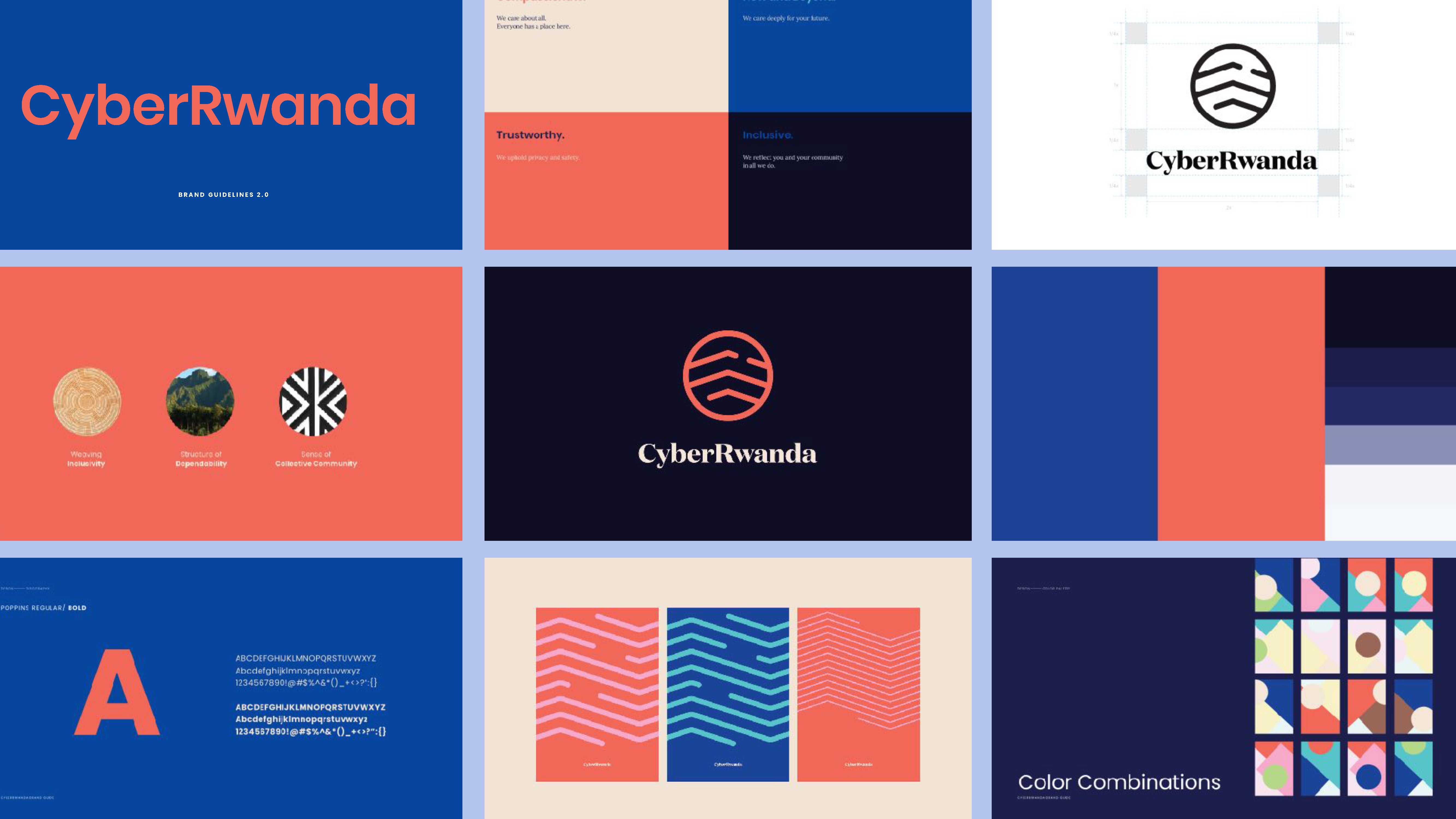


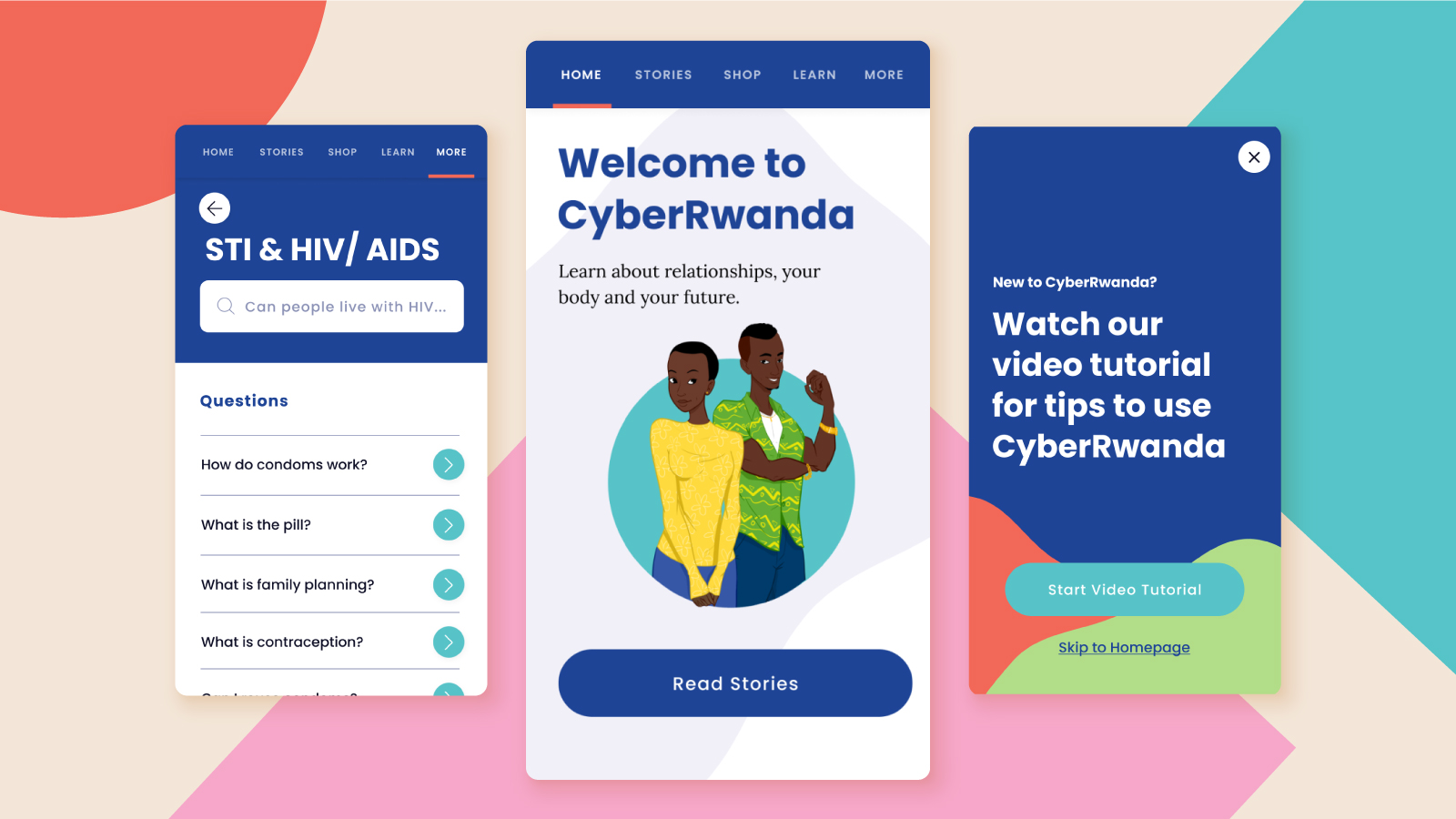

One way we are working to make CyberRwanda desirable to young people is to create a strong logo and visual design. The logo for CyberRwanda was created to represent a sense of collective community. We worked closely with young people in Kigali to develop a mark that was based on traditional Rwandan art, strong yet simple patterns, and the many rolling hills that surround the capital city and earn it its motto, Milles Collines; the land of a thousand hills. Our brand values are being compassionate, trustworthy, future forward, and inclusive.
Further reading on CyberRwanda.
Further reading on CyberRwanda.
Faya Digital
BRANDING & IDENTITY
SOCIAL DESIGN
INTERACTION DESIGN
Challenge: In Kenya, improving adolescent sexual and reproductive health and rights (SRHR) remains a high priority. Teen pregnancy and motherhood rates in Kenya stand at 18% meaning about one in every five adolescent girls has either had a live birth, or is pregnant with her first child ¹. At the same time, 49% of unmarried girls from 15-19 have unmet needs for family planning, which means that they would use modern contraception if they had access to it, but they don’t ². 13,000 girls drop out of school annually due to early and unintended pregnancy ³ and almost 30% of all new HIV infections are among adolescents and youth ⁴.

How might we use technology to make sex education engaging and accessible?


After multiple rounds of co-designing and testing with users, using a youth-driven design approach, our team designed and developed a WhatsApp chatbot called AskDoki. AskDoki, means “Ask a Doctor” in Kiswahili. AskDoki, is a natural language processing (NLP) ⁵AI-powered counselor for young people seeking advice and services to protect their health. Doki, our doctor chatbot persona, delivers comprehensive sexual and reproductive health education for adolescents based on eight topics ranging from healthy relationships, gender, STI and HIV/AIDS, to future livelihoods in Kiswahili and English. She also connects them with nearby youth-friendly service providers for free, and answers questions that are popular among young people. Our team chose WhatsApp since it is one of the most used social media platforms, and 96% of Internet users 16-64 reported using WhatsApp the previous month¹¹.




During the rough prototyping phase, we learned that mobile users in Kenya have access to “free WhatsApp”, which means users can access WhatsApp text and audio for free without depleting any of their purchased data bundles. However, downloading files like highly desired illustrations and videos is not part of the free WhatsApp offer, and we anticipate that many young people would not have mobile data bundles to view the photos, illustrations, and videos. Therefore, as we were creating the content, we ensured the most critical information was conveyed in the free WhatsApp text messages, whilst also including more visually engaging materials.
Further reading on AskDoki.
Further reading on AskDoki.
Are We All Racist?
INTERACTION DESIGN
GRAPHIC DESIGN
PRINT DESIGN
VIDEO
CULTURAL PROBE
This body of work is a compilation of sensory ethnography for design research to understanding the patterns of behavior and gaining insights into how my subjects viewed the subject of racism and how it affected them.
The Ethnographic Research

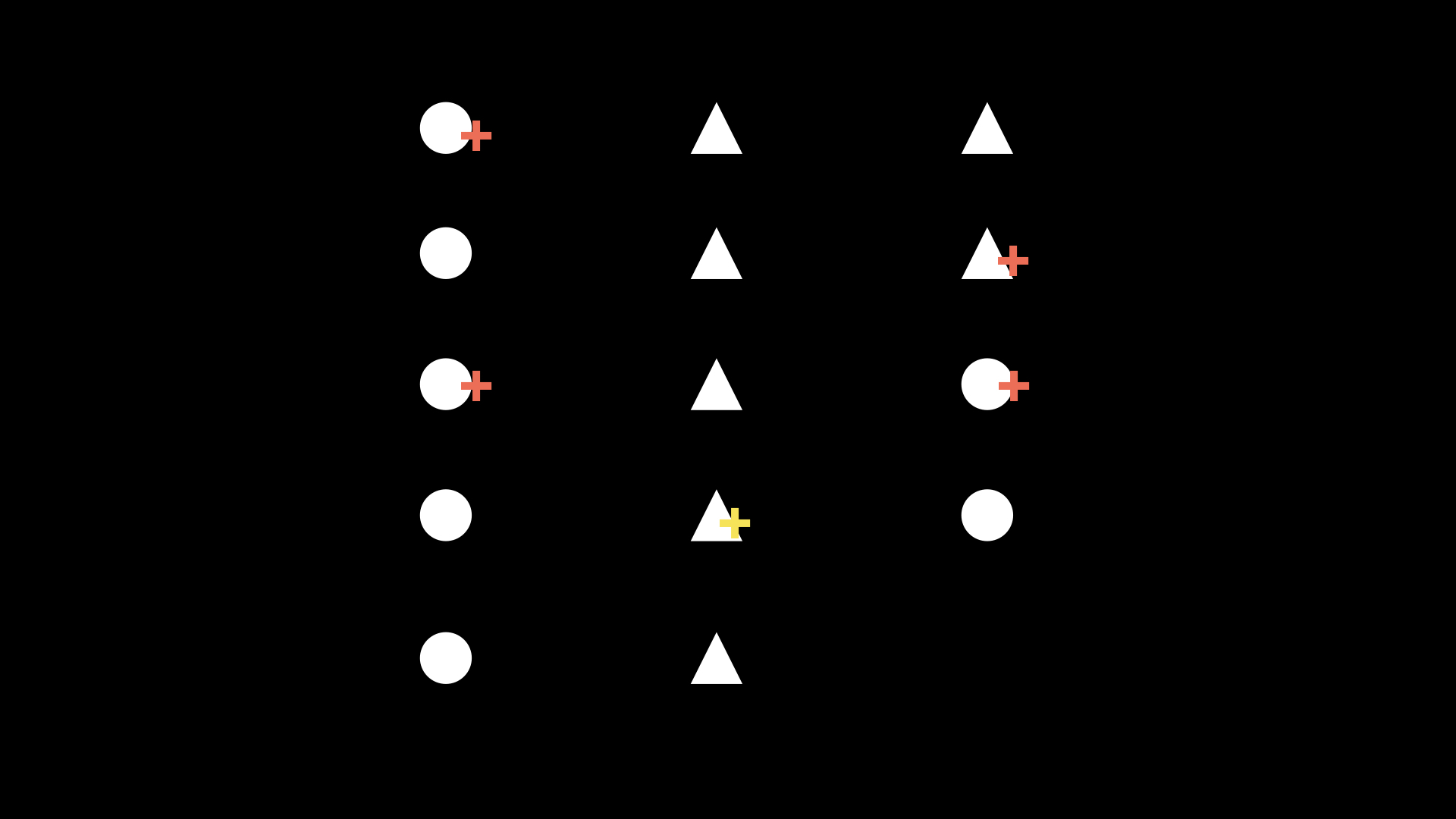
The purpose
The ethnographic research of the place, The Nuyorican Poets Cafe was a visual representation of an area that's considered a safe space. It is the perfect space to have a sensorial experience that had the relevant group of individuals who belong to marginalized communities. Hence, it couldn't be photographed or documented
in any way.
My documentation of the performers there was coded to be respectful of their privacy and the policies of the place. I used symbols to represent their ethnicity, race, and gender to get an understanding of who is using poetry as a platform.
The ethnographic research of the place, The Nuyorican Poets Cafe was a visual representation of an area that's considered a safe space. It is the perfect space to have a sensorial experience that had the relevant group of individuals who belong to marginalized communities. Hence, it couldn't be photographed or documented
in any way.
My documentation of the performers there was coded to be respectful of their privacy and the policies of the place. I used symbols to represent their ethnicity, race, and gender to get an understanding of who is using poetry as a platform.





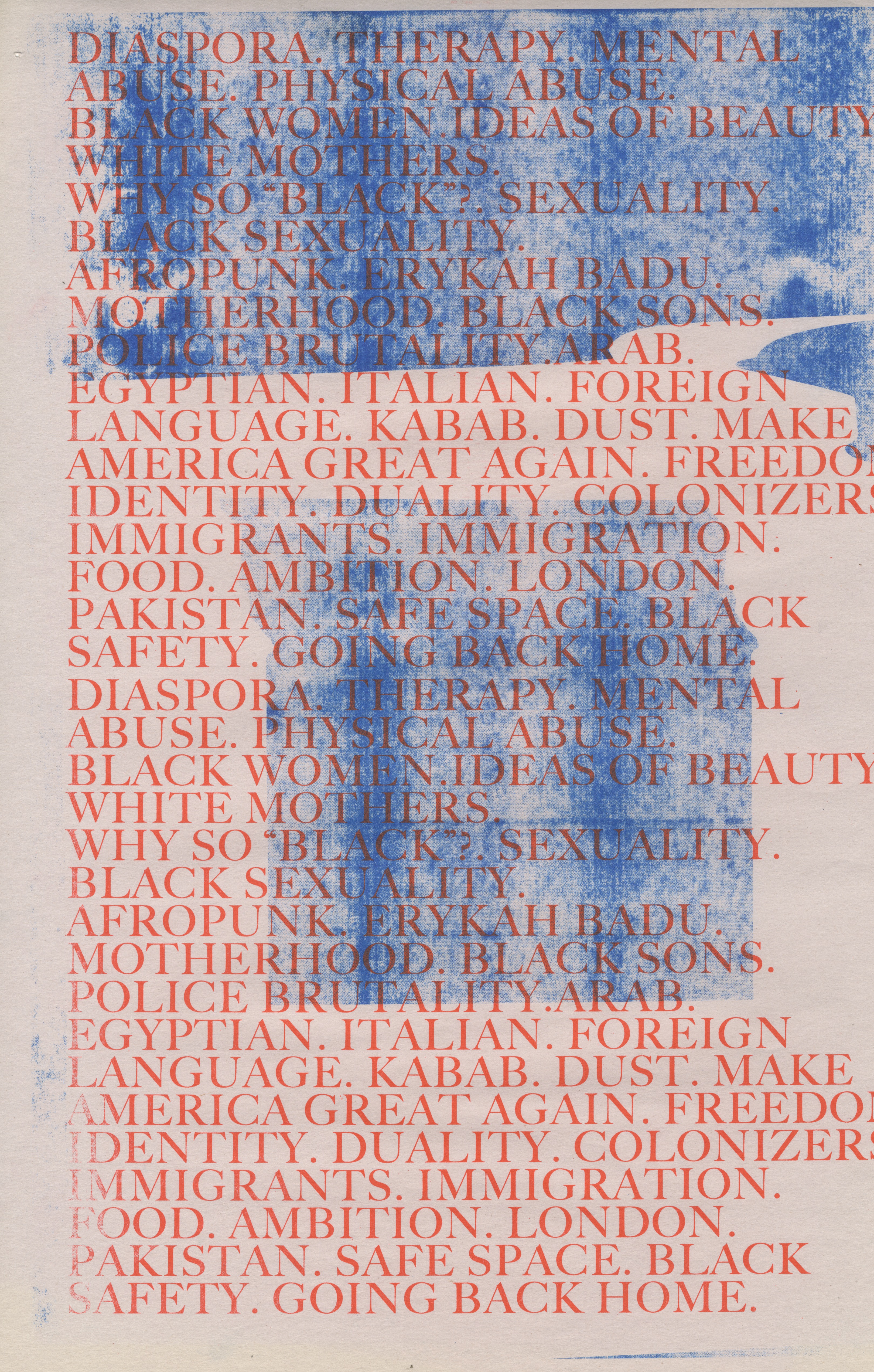

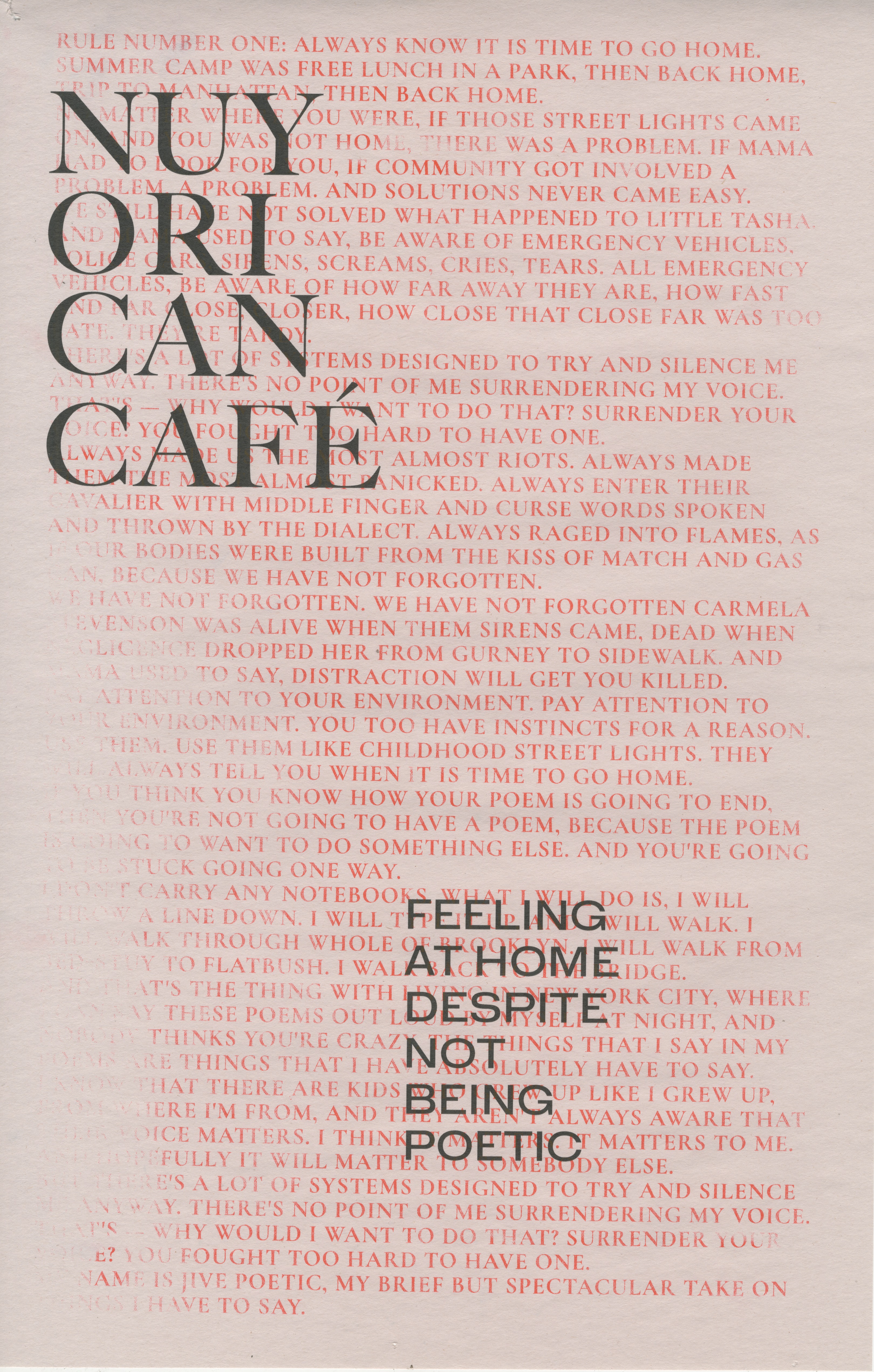





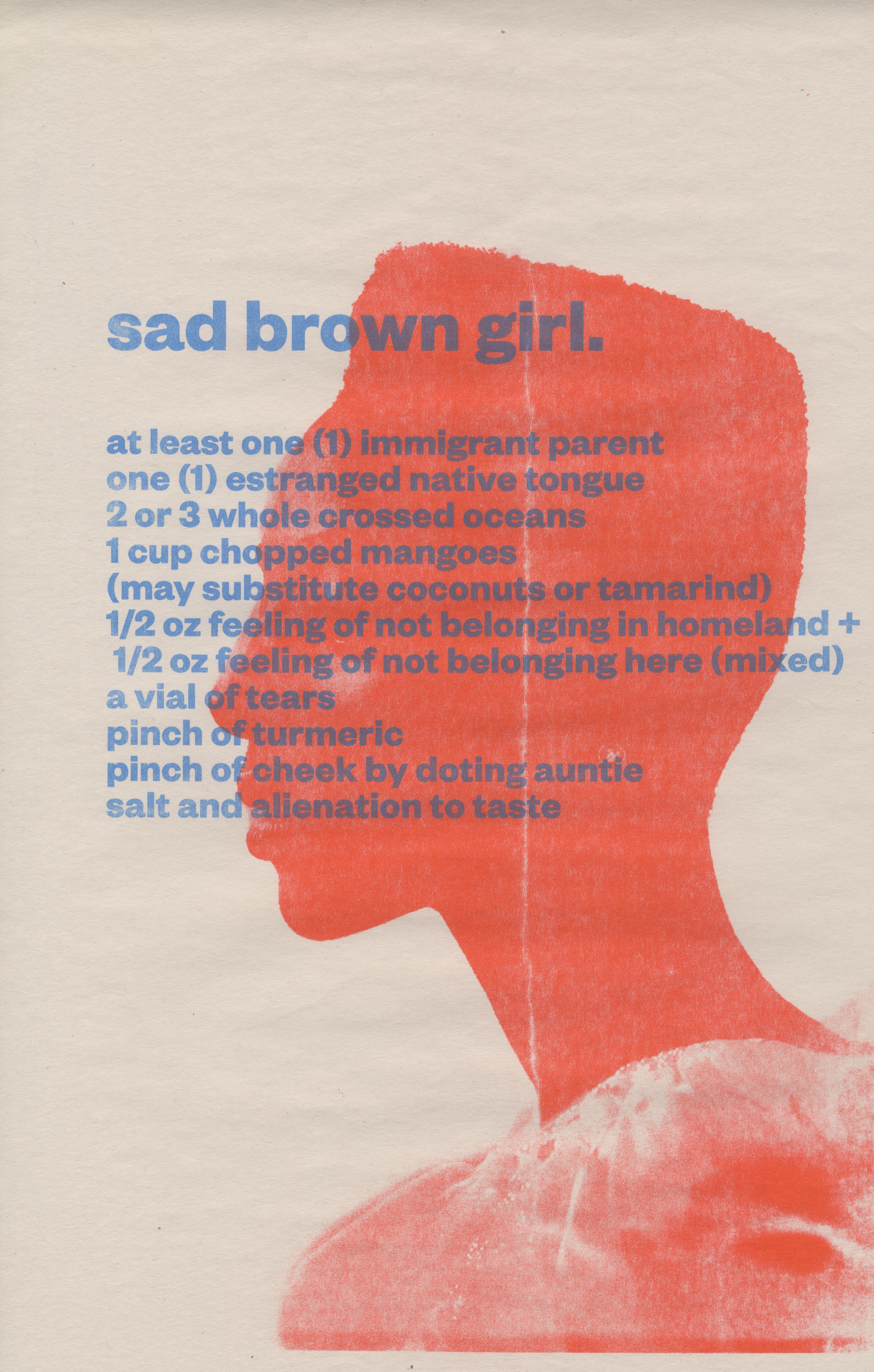



JivePoetic from Snigdha pamula on Vimeo.

The juxtaposition of a performance piece by the host of the event, Jive Poetic (documented by Pratt Institute), with my observations from the Cafe to make a visual representation of what the experience at the space was without photographic evidence.
I further supplemented the visuals of the Nuyorican Poets' Cafe with poetry from Audre Lorde, Nayyirah Waheed, Rupi Kaur, and Yrsa Daley-Ward to demonstrate how poetry was being used as a medium to raise awareness about issues personal to the authors who are people of color.
It was also a contrast to the safe atmosphere that Nuyorican Poets' Cafe created versus Instagram's comment section which is not always positive.
The Cultural Probe
What did I want to find out?
Using images of prominent celebrities, politicians, and policy-makers, I designed a group activity that required people to describe the person on the card using only three adjectives without revealing their profession. This exercise gave insights into how people perceived these public figures outside of their profession.
I used another edition of the same showing the same figure, but in different settings and attire to see if the subjects thought they were presidential or not.
Another activity included drawing their idea of an all-powerful being and what they could get away with in real life. Through the first part of the question, I aimed to understand how they viewed power visually. The second part added a layer of fantasy grounded in reality.
The third activity was ranking races in any order they deemed appropriate and why. The fourth exercise was creating an animoji that best represented them on their phones and using that animoji to sing their anthem of power. My expectations for this exercise was to understand how they regarded their sense of power and what drove them. The song, however, had scope for unexpected responses to see what kind of music made them feel powerful.
What did I want to find out?
Using images of prominent celebrities, politicians, and policy-makers, I designed a group activity that required people to describe the person on the card using only three adjectives without revealing their profession. This exercise gave insights into how people perceived these public figures outside of their profession.
I used another edition of the same showing the same figure, but in different settings and attire to see if the subjects thought they were presidential or not.
Another activity included drawing their idea of an all-powerful being and what they could get away with in real life. Through the first part of the question, I aimed to understand how they viewed power visually. The second part added a layer of fantasy grounded in reality.
The third activity was ranking races in any order they deemed appropriate and why. The fourth exercise was creating an animoji that best represented them on their phones and using that animoji to sing their anthem of power. My expectations for this exercise was to understand how they regarded their sense of power and what drove them. The song, however, had scope for unexpected responses to see what kind of music made them feel powerful.






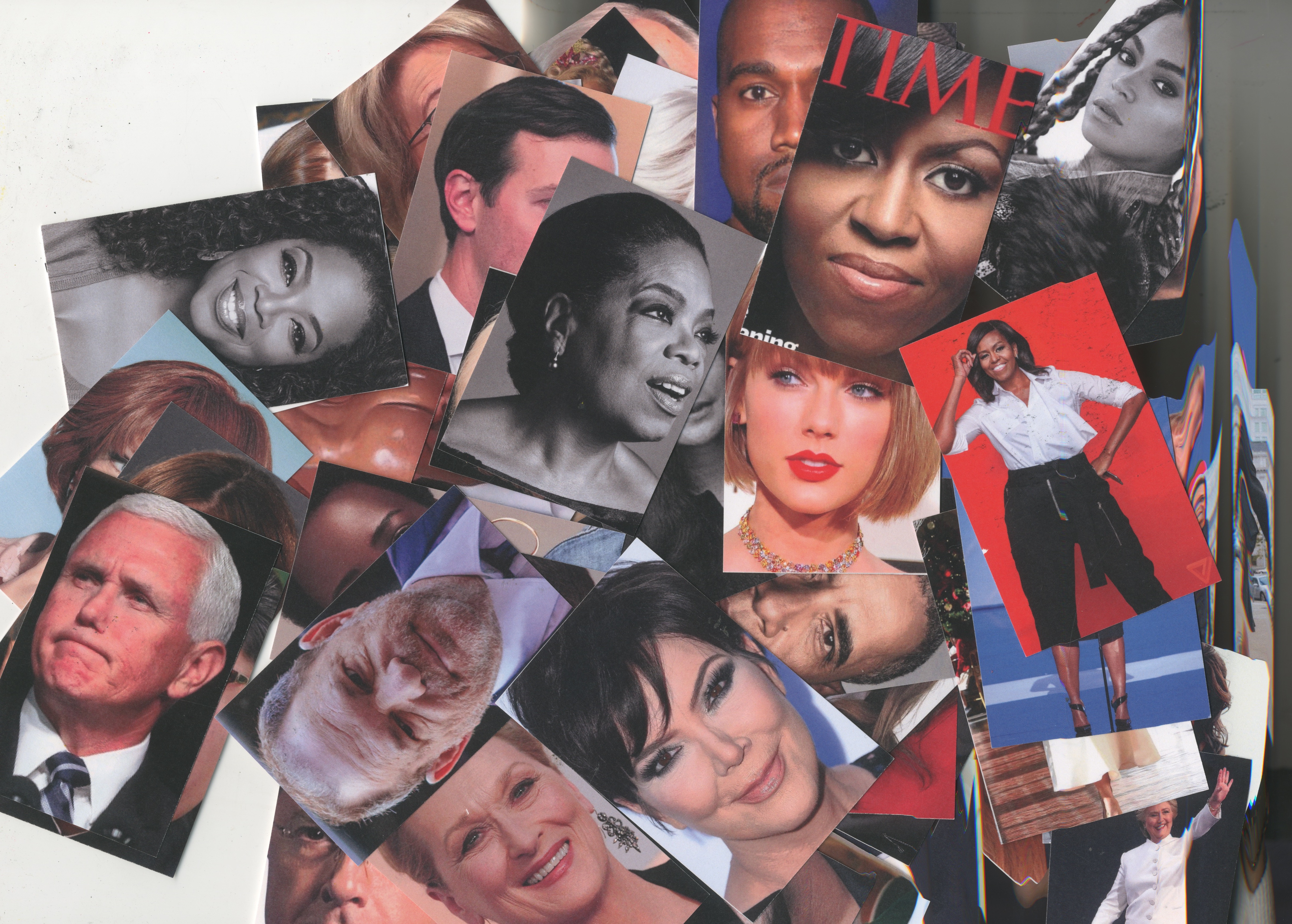


The Results
Using grounded theory, I analyzed the results of my ethnographic research and my cultural probe and created a list of code that was relevant for my area of study.
I used code words like patriarchy, imbalance, weaponization, empower, whitewash, discomfort, privilege, force, sexualize, visual appearance to describe the area of my subject. I then categorized the responses from the ethnographic research and cultural probe into these categories and created a new section for the ones that didn't fit my initial speculations. Once populated, the sections gave rise to interpretative code that offered insights into the meaning behind the responses collected.
Using the insights and the values of the subjects, I created a data visualization of the responses as a design response.
Celestial is a data visualization of the data collected from my cultural probe that attempted to understand how people of all races perceived the concept of power and privilege despite coming from varying backgrounds and nationalities. Each celestial body represented a code like patriarchy, discomfort and, visual representations. The responses showed expected and unexpected results.
The visual of the space through a lens that is unique to each observer is representative of one's biases and how they see the world through that lens.
I used code words like patriarchy, imbalance, weaponization, empower, whitewash, discomfort, privilege, force, sexualize, visual appearance to describe the area of my subject. I then categorized the responses from the ethnographic research and cultural probe into these categories and created a new section for the ones that didn't fit my initial speculations. Once populated, the sections gave rise to interpretative code that offered insights into the meaning behind the responses collected.
Using the insights and the values of the subjects, I created a data visualization of the responses as a design response.
Celestial is a data visualization of the data collected from my cultural probe that attempted to understand how people of all races perceived the concept of power and privilege despite coming from varying backgrounds and nationalities. Each celestial body represented a code like patriarchy, discomfort and, visual representations. The responses showed expected and unexpected results.
The visual of the space through a lens that is unique to each observer is representative of one's biases and how they see the world through that lens.






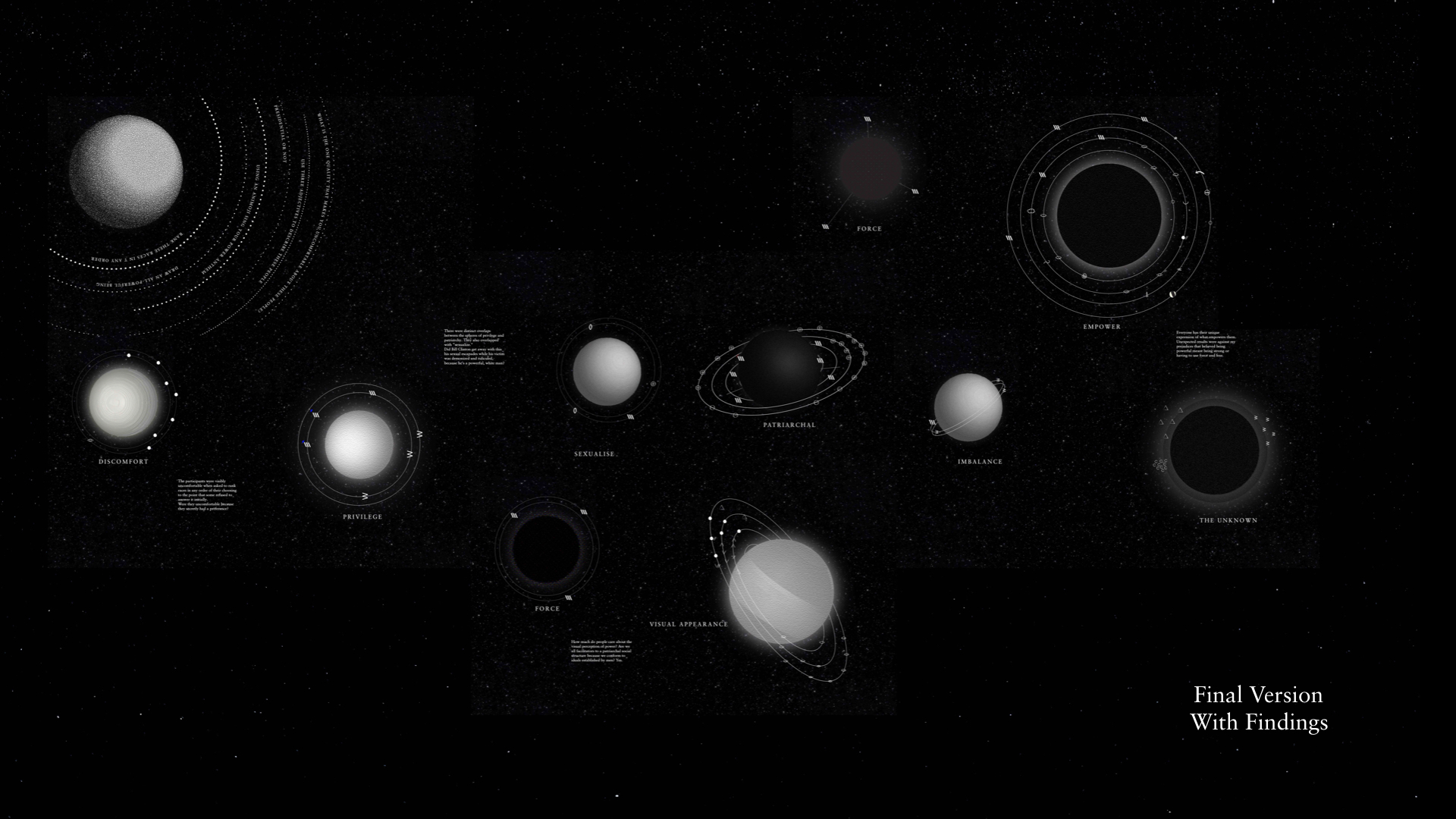






😒 Snigdha Pamula, 2024 ©
